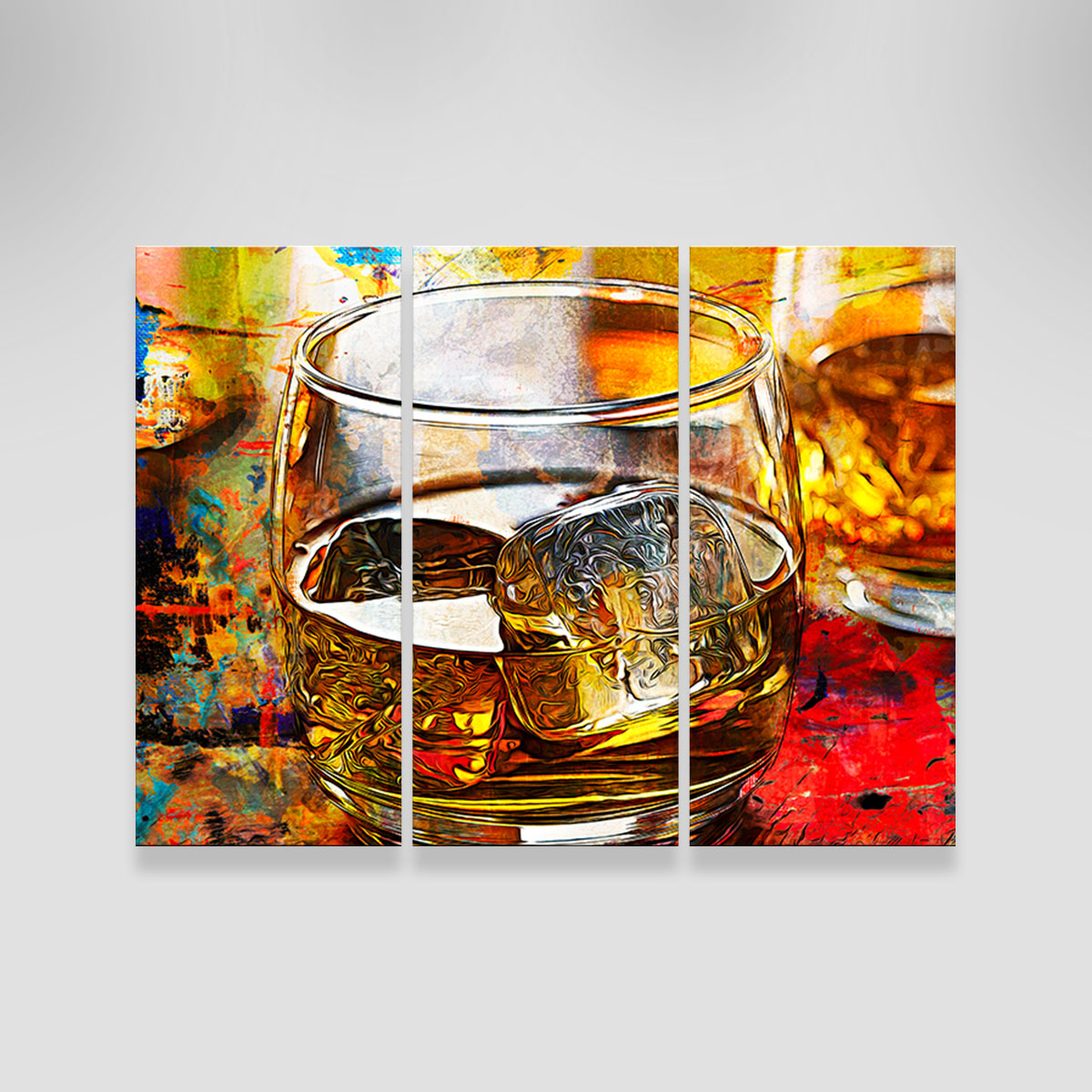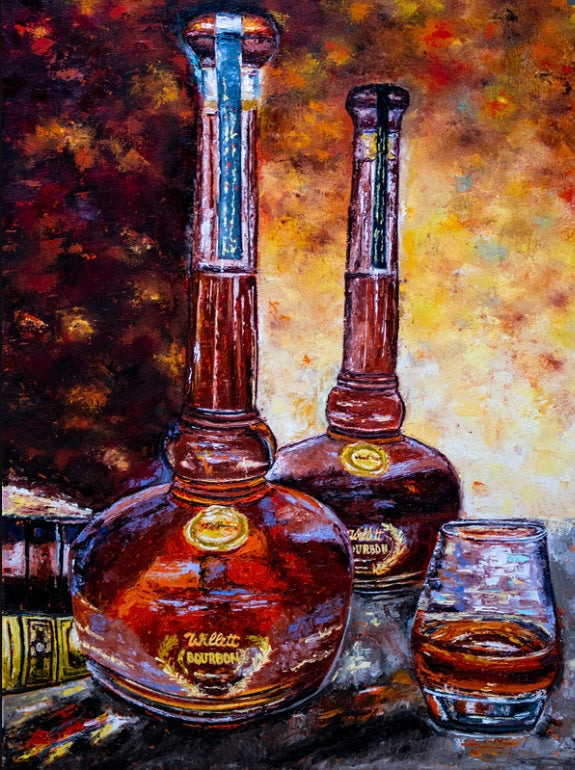Bourbon Art in Contemporary Society: Where Practice Fulfills Innovation
Bourbon Art in Contemporary Society: Where Practice Fulfills Innovation
Blog Article
The Relevance of Whiskey Art in Celebrating Heritage and Workmanship in the Beverage Industry
The complex connection in between bourbon art and the party of heritage and workmanship within the beverage market can not be overemphasized. Through attentively made tags and containers, bourbon brands encapsulate their historic origins and the artisanal abilities that define their manufacturing approaches. This creative dimension not just boosts market appeal but additionally serves as an avenue for cultural narration, fostering a deeper connection between the customer and the craft. As we explore the different elements of this subject, interesting questions regarding the effect of contemporary trends on typical practices arise, prompting additional examination.
The Historical Origins of Whiskey
At the heart of bourbon's attraction lies an abundant tapestry of historical roots that map back to old human beings. The beginnings of scotch can be connected to the purification methods of the Sumerians and Babylonians around 2000 BCE, where very early types of fermented grain drinks started to arise. However, it was in the Center Ages that the art of distillation evolved significantly, especially in Ireland and Scotland, causing the creation of whiskey as we understand it today.
The term "bourbon" itself acquires from the Gaelic word "uisce beatha," indicating "water of life." This phrase emphasizes the cultural significance of scotch in Celtic cultures, where it was usually related to routines, parties, and common bonding. By the 15th century, purification came to be an identified craft within reclusive neighborhoods, leading the way for the establishment of lawful distilleries.
As profession paths increased, whiskey's popularity grew, transcending local limits and capturing the interest of connoisseurs worldwide. Limited Edition. This historical journey shows not just the workmanship behind bourbon manufacturing however also its essential role in social and cultural contexts, marking it as a considerable beverage throughout history
Artistic Expression in Branding
Whiskey branding stands as a compelling intersection of artistry and business, where visual identification plays an important role fit customer perception. The aesthetic appeals of bourbon tags, packaging, and advertising products reflect not just the brand's story yet additionally its core worths and heritage. With imaginative expression, distilleries communicate a narrative that resonates with customers, stimulating feelings and triggering connections.
Making use of shade, typography, and images in branding serves to distinguish products in a saturated market. Traditional motifs may stimulate a sense of credibility and craftsmanship, while modern-day styles can indicate development and forward-thinking. This strategic creative instructions boosts brand recognition and loyalty, allowing consumers to create a personal connection with the scotch they select.
Additionally, imaginative expression in branding frequently works as an event of local heritage. Distilleries frequently incorporate regional signs or historical references into their styles, creating a sense of area that invites customers to take part in a more comprehensive cultural experience. Ultimately, the virtuosity behind scotch branding not only enhances aesthetic charm but likewise enriches the total story of the brand, promoting a deeper recognition for the workmanship and heritage embedded in each container.
Workmanship in Bottle Design
The artistry evident in whiskey branding prolongs beyond visual identity to include the craftsmanship involved in bottle design. Each container offers as a vessel not simply for the spirit within, but also for the story it informs concerning its origin, practice, and quality. The style process requires thorough attention to information, as components such as product, form, and closure add dramatically to the general understanding of the bourbon.
Workmanship in bottle style includes choosing high-grade glass that can improve the whiskey's shade and clearness, while also providing a responsive experience for the customer. The shape of the bottle need to be both visually enticing and practical, typically showing the heritage of the brand name. Numerous distilleries select distinct shapes or printed logos that evoke a feeling of authenticity and background.
Additionally, the tag style try this out and typography play a crucial duty in interacting the brand's story. Realism Art. A well-crafted bottle not just mesmerizes the customer's eye however likewise strengthens the brand name's dedication to top quality and practice. By doing this, the craftsmanship of bottle design comes to be a crucial element of the whiskey experience, combining virtuosity with an extensive respect for heritage
Cultural Relevance of Bourbon Art
Commemorating tradition and workmanship, have a peek here the cultural relevance of bourbon art transcends plain appearances, intertwining with the historic and social stories of the areas from which it stems. Each container offers as a canvas, portraying the unique tales, mythology, and customs that have shaped neighborhood whiskey-making practices. The complex styles commonly mirror the heritage of the distillers, integrating symbols and motifs that resonate with the society and worths of their neighborhoods.

Furthermore, whiskey art plays an important duty in common events and events, acting as a tangible link between people and their shared experiences. By valuing the creativity in scotch product packaging, customers grow a deeper understanding and respect for the craft, inevitably enhancing their pleasure of the beverage itself.
Modern Trends in Bourbon Discussion
Over webpage the last few years, the presentation of scotch has actually developed to show contemporary preferences and fads while still recognizing typical workmanship - Whiskey Art. Distilleries are progressively concentrating on aesthetic aspects that boost the overall alcohol consumption experience, linking the gap between heritage and modernity
Innovative bottle styles have actually arised, usually including lasting products and creative labels that tell engaging stories. Lots of brand names now team up with neighborhood musicians, instilling their products with distinct visual expressions that resonate with customers. Furthermore, limited-edition releases are typically packaged in collectible containers, including value and allure for aficionados.

Conclusion
In verdict, scotch art serves as an essential channel for revealing the heritage and craftsmanship intrinsic in the drink sector. Via detailed branding, cutting-edge container designs, and culturally considerable creative elements, scotch brand names efficiently honor their practices and connect with consumers.


Craftsmanship in bottle design entails picking high-quality glass that can enhance the scotch's color and clearness, while likewise offering a responsive experience for the consumer. In this method, the workmanship of container style becomes an important aspect of the bourbon experience, combining artistry with a profound respect for heritage.
In final thought, bourbon art offers as an important channel for expressing the heritage and workmanship inherent in the drink sector.
Report this page